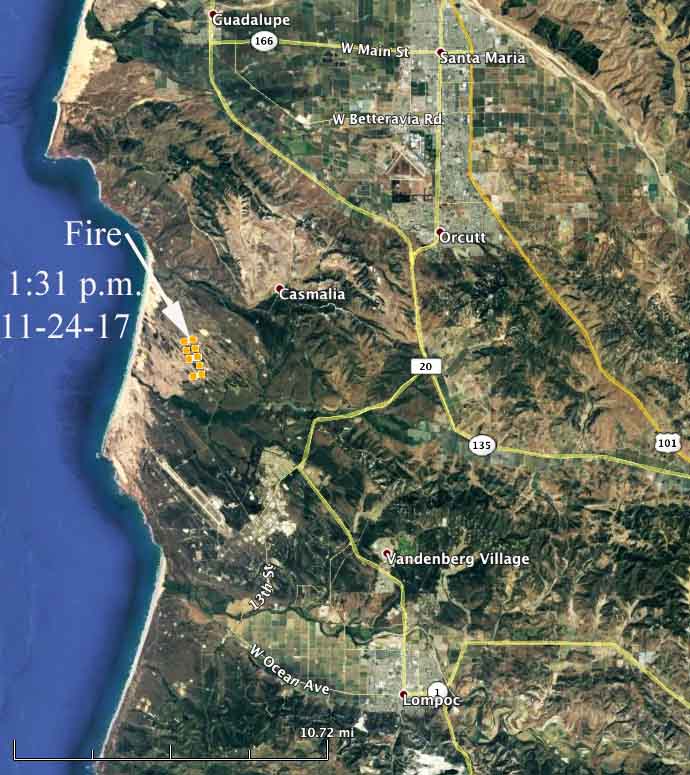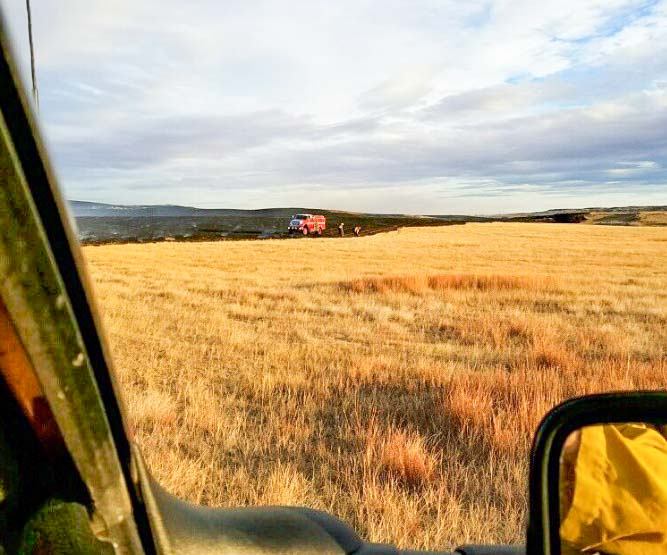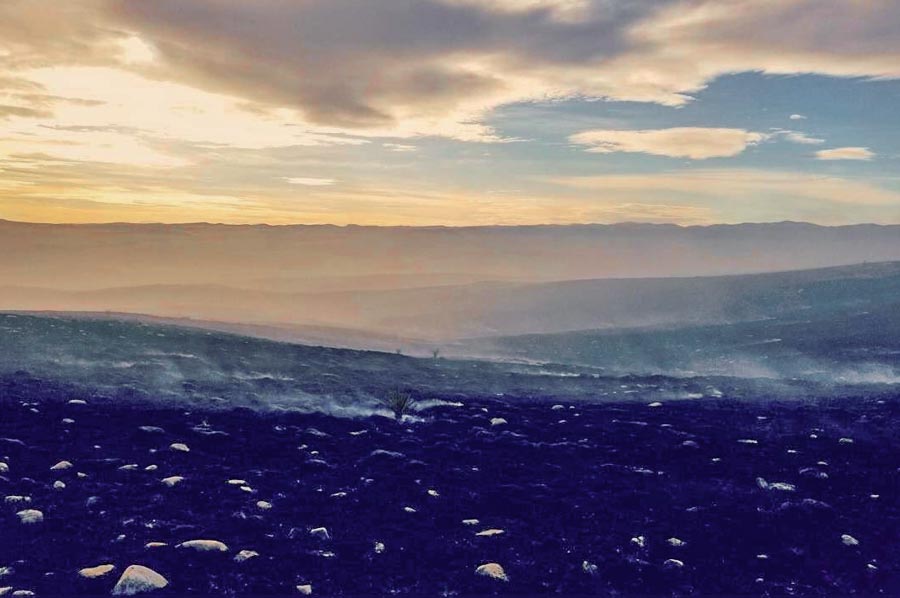Above: photo from the report.
(Originally published at 4:40 p.m. November 27, 2017)
An engine carrying three wildland firefighters slid off a muddy road September 12, 2017 and rolled over two-and-a-half times when they were returning from a smoke check. Considering the violent accident, the injuries were minor — a laceration on one person and a broken rib on another.
The report released by the Wildland Fire Lessons Learned Center does not specify where the the rollover occurred, except that the crew was returning to Montrose, Colorado, an investigator came from Grand Junction, and it also mentioned a couple of landmarks, if true, that are known only to locals, such as Hauser Road.
The truck was a U.S. Forest Service Ford F-550 configured as a Type 6 engine which sustained major damage. The roof partially collapsed, crushing some of the side windows:
…the crew barely had enough room to crawl out the opening with metal scraping against their backs and stomachs.
The damage to the truck and the injuries to the firefighters might have been worse if the truck had not had the “Rear Cab Protection Rack (headache rack)”, a structure behind the cab. But apparently it did not have a full cab roll bar. (UPDATE November 30, 2017: the report lists the headache rack under “What went well”, but does not elaborate. These structures are designed to hold lights and to prevent cargo from sliding forward through the rear window, but should not be expected to provide serious protection during a rollover. We added the next photo that was included in the report, which offered no caption or explanation. It is unknown if it shows the engine involved in the rollover.)
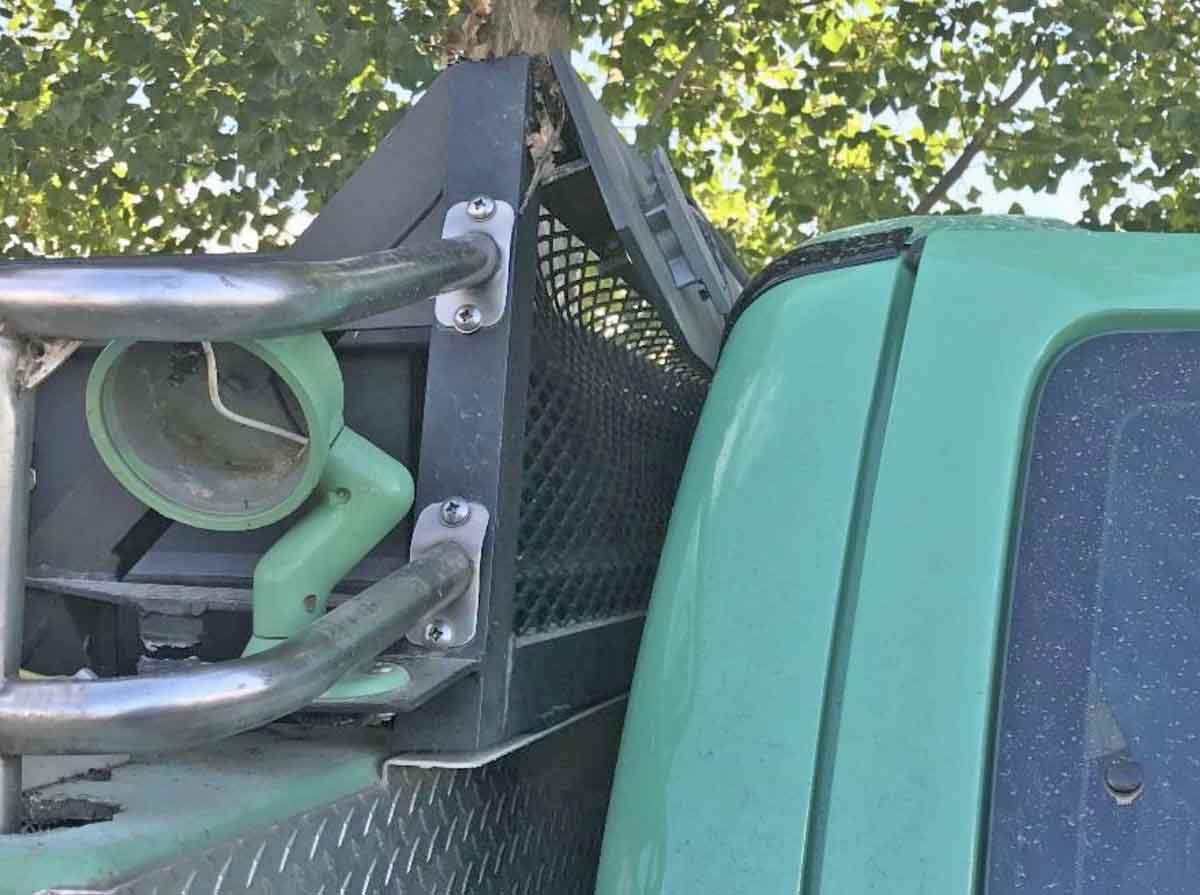
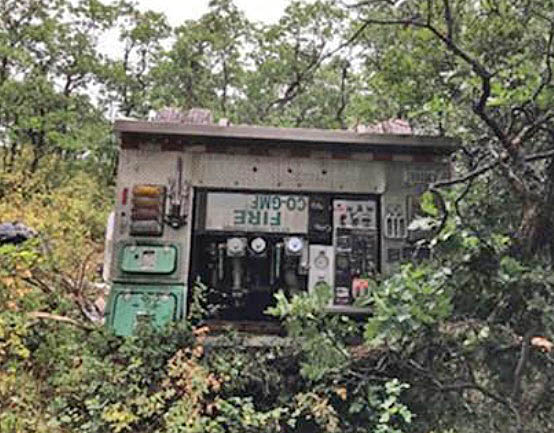
Below is an excerpt from the report; it begins as the truck was sliding on the muddy road:
Engine 36’s passenger-side front wheel slid toward the edge. Everyone braced for the expected bump into the lip of the road. However nothing was there to slow the engine’s slide to the right and the front wheel went off the road, followed by the rest of Engine 36.
The engine violently rolled two-and-a-half times down the embankment, gaining speed with each rotation. “When will this end!” the Engine Captain thought to himself as glass shattered, metal crumpled and screeched, and the world spun end over end.
Engine 36 came to rest on its roof, braced against large trunks of oak brush. Everything in the cab came to a stop. A muffled and intermittently eerie buzzing came from the horn. Water hissed. As the crew steadied themselves, calling out to check the status of each other, a loud “pop” from the roof was heard.
As they felt the vehicle’s cab start to give a little bit, the decision was made to exit as quickly as possible. The curtain airbags were still partially inflated. Captain 36 had to deflate them with his personal knife. Exiting out the passenger side window, the crew barely had enough room to crawl out the opening with metal scraping against their backs and stomachs.
There has been an epidemic of wildland fire engine rollovers. This is the 48th article on Wildfire Today tagged “rollover”.
We still stand behind what we wrote in a 2015 article about the many firefighter fatalities from rollovers:
The wildland fire agencies should fund research conducted by engineers to determine how to prevent the passenger compartments in their fire engines from collapsing in accidents.




